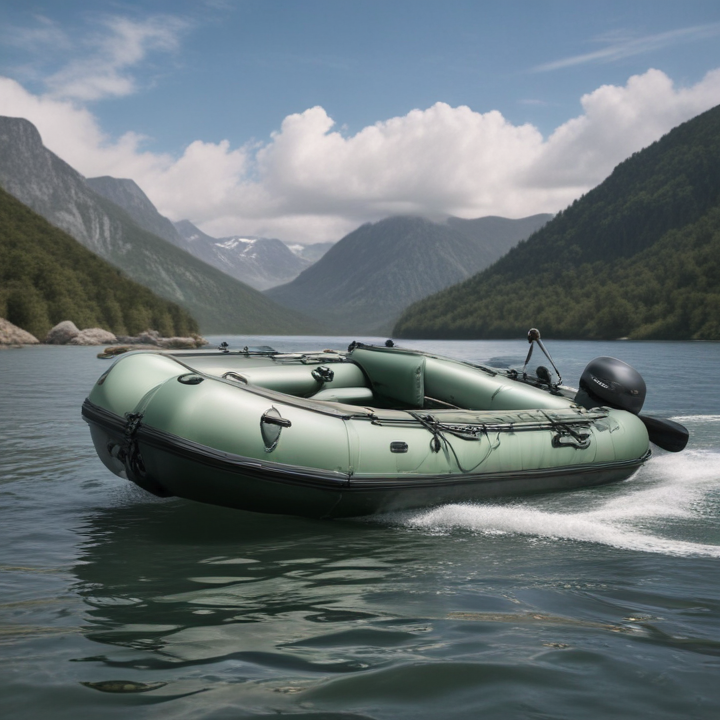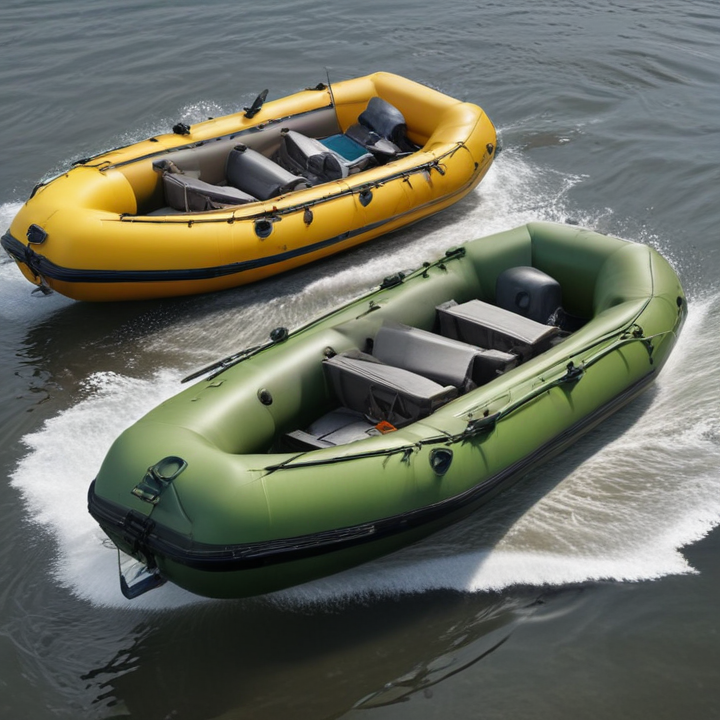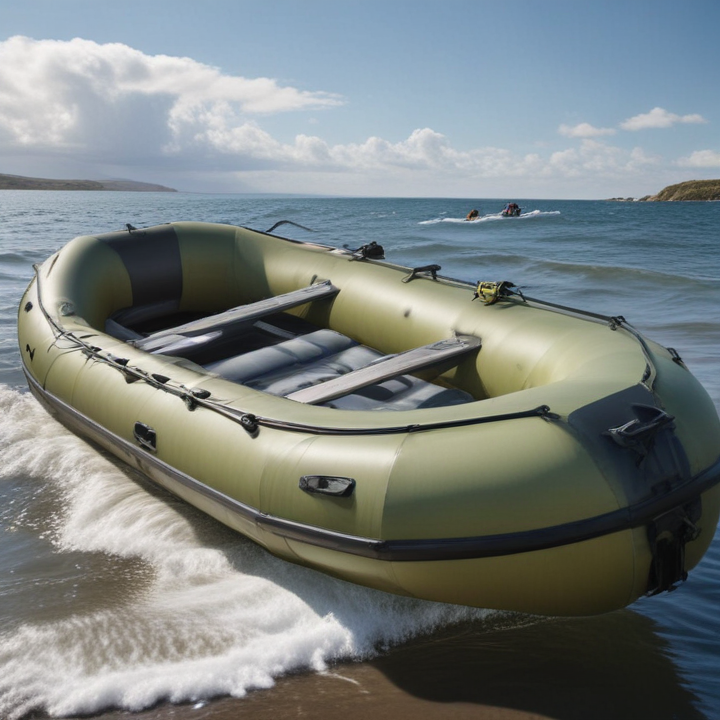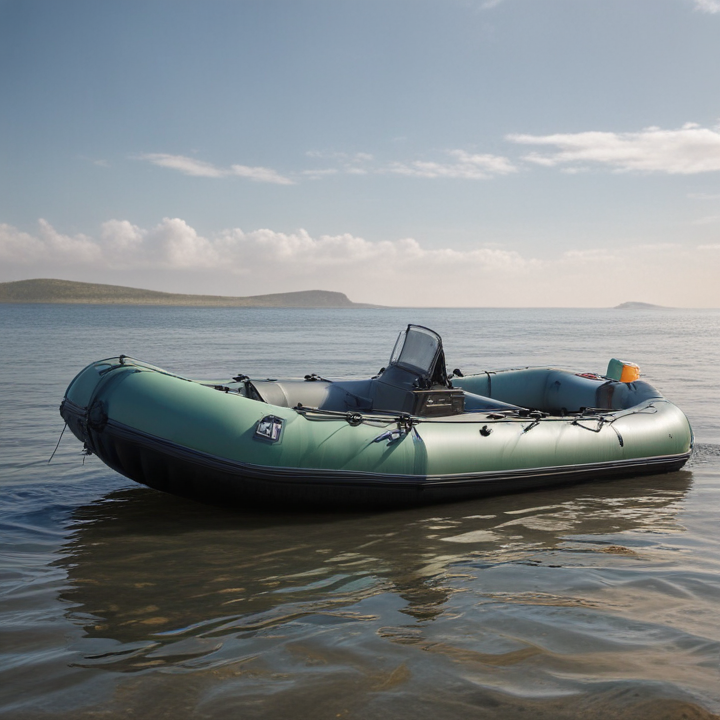Inflatable Boats Safety Certifications
Inflatable boats, also known as rigid-inflatable boats (RIBs) or inflatables, are popular for their portability and versatility in recreational and professional water activities. Ensuring safety in these boats is paramount, and several certifications and standards help guarantee their reliability.
One primary certification is the ISO 6185 standard, established by the International Organization for Standardization (ISO). This standard provides guidelines for the design, materials, manufacturing, and operational safety of inflatable boats across different categories, from small leisure vessels to heavy-duty RIBs.
In the United States, the Coast Guard has specific requirements for inflatable boats. Vessels must meet standards outlined in Title 33 of the Code of Federal Regulations (CFR). Compliance with these standards ensures the boats are built to a high safety standard and may be subject to random inspections.
For European markets, the CE Certification is crucial. This marking indicates conformity with the safety, health, and environmental protection standards for products sold within the European Economic Area (EEA). It involves rigorous assessments and tests to confirm that the inflatable boat meets essential safety requirements.
Another significant certification is the NMMA (National Marine Manufacturers Association) certification, which involves strict independent assessments in line with standards set by the American Boat & Yacht Council (ABYC). This certification ensures the inflatable boat adheres to high safety and construction standards.
Lastly, organizations like the Royal National Lifeboat Institution (RNLI) often have their safety standards and approval processes, especially for RIBs used in professional and rescue operations.
These certifications and regulations play a critical role in ensuring the safety and performance of inflatable boats, reassuring users that the vessels they are using meet stringent safety and quality benchmarks. Always look for these certifications when purchasing or using an inflatable boat to ensure the highest standards of safety are met.
List Reference Technical Parameters of “Inflatable Boats”
Inflatable boats are versatile and widely used in various sectors such as recreational boating, military operations, and rescue missions. Understanding their reference technical parameters is crucial for selecting the right model that meets specific needs. Here are the key technical parameters of inflatable boats:
1. Material:
– PVC (Polyvinyl Chloride): Lightweight, affordable, and suitable for casual use.
– Hypalon (CSM – Chlorosulfonated Polyethylene): Highly durable, resistant to UV rays, chemicals, and extreme temperatures, making it ideal for professional use.
– Polyurethane: Offers superior puncture resistance and strength, used in high-performance inflatable boats.
2. Chambers:
– Multiple air chambers enhance safety by ensuring the boat remains afloat even if one chamber fails. Commonly, inflatable boats have between 3 to 5 independent chambers.
3. Capacity:
– Measured in terms of the maximum number of passengers and cargo weight the boat can safely carry, often specified in kilograms or pounds.
4. Dimensions:
– Length: Typically ranges from 2.5 meters to over 7 meters.
– Beam (width): Generally between 1.2 meters to 2.5 meters.
– Tube Diameter: Affects stability and buoyancy, usually between 30 cm to 60 cm.
5. Floor Type:
– Air Floor: Lightweight and easy to store, offering good comfort.
– Aluminum/Plywood Floor: Provides rigid support and stability, preferred for heavy-duty use.
– Drop-Stitch (Inflatable High-Pressure Floor): Combines the benefits of both air and rigid floors, offering high rigidity while being easily foldable.
6. Transom:
– The transom supports the outboard motor and varies in height and material strength.
7. Motor Compatibility:
– Specifies the maximum allowable horsepower (HP) and weight of the outboard motor.
8. Hull Shape:
– Flat Hull: Provides greater stability in calm waters.
– V-Hull (Deep V or Shallow V): Enhances performance in rough waters by cutting through waves effectively.
Understanding these parameters helps in assessing the suitability of an inflatable boat for intended applications, ensuring optimal safety, performance, and reliability.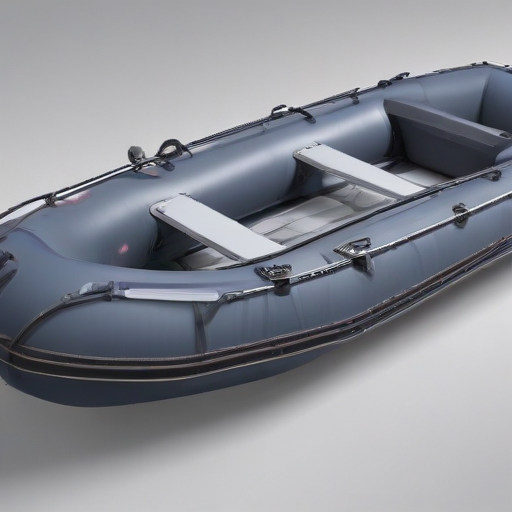
List Product features of “Inflatable Boats”
Inflatable boats come with a range of features designed to enhance their functionality, durability, safety, and user experience. Here’s a concise list of typical product features:
1. Material Construction:
– PVC or Hypalon: Durable, UV-resistant, and weather-resistant materials.
– Reinforced Seams: Heat-welded or glued for maximum durability.
2. Air Chambers:
– Multiple Air Chambers: Ensure safety by maintaining buoyancy if one chamber deflates.
– High-Pressure Valves: Provide easy inflation and prevent accidental deflation.
3. Floor Types:
– Rigid Inflatable Floor: Offers robust support and stability.
– Slat or Roll-Up Floors: Lightweight and easy to assemble and store.
– Air Decks: High pressure, inflatable floors for comfort and rigidity.
4. Hull Design:
– V-Hull Design: Enhances speed, stability, and navigation in rough waters.
– Catamaran Hull: Provides superior balance and minimizes drag.
5. Load Capacity:
– Varied Sizes: Accommodate different numbers of passengers and weight capacities.
6. Convenience Features:
– Inflatable Keel: Improves handling and performance.
– Bow Storage Bag: Useful for stowing gear securely.
– Carry Handles: Facilitates easy transportation.
7. Seating & Comfort:
– Removable Seats: Allow customization and easy cleaning.
– Padded Seats: Enhance comfort during long outings.
8. Safety Features:
– Non-Slip Surface: Ensures safe footing.
– Grab Lines: Around the perimeter for safety during boarding and emergencies.
– Life Line Ropes: Provide additional safety measures.
9. Accessories:
– Oarlocks and Oars: Essential for manual paddling.
– Motor Mounts: Compatible with outboard motors for added power.
– Repair Kits: Include patches and adhesives for field repairs.
10. Portability:
– Compact and Lightweight: Easy to deflate, pack, and transport.
– Carry Bag: Typically included for hassle-free transport and storage.
These features work together to make inflatable boats versatile, practical, and user-friendly for recreational, professional, and emergency applications.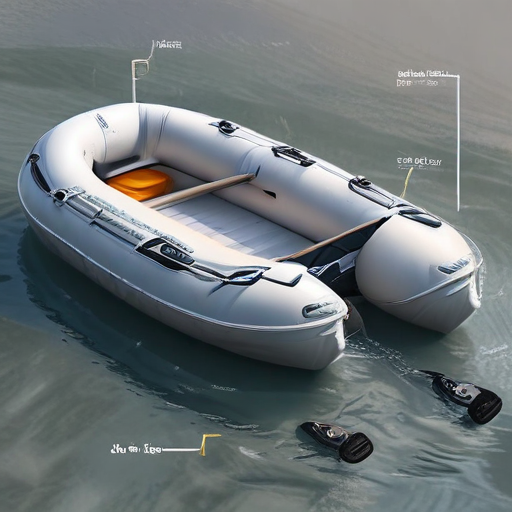
List Application of “Inflatable Boats”
Inflatable boats are versatile and widely used in various sectors due to their portability, ease of storage, and lightweight construction. Here are some key applications of inflatable boats:
1. Recreational Activities: Inflatable boats are popular for recreational purposes such as fishing, leisure cruising, water sports, and family outings. Their small size makes them ideal for lakes, rivers, and coastal areas.
2. Rescue Operations: Due to their lightweight and quick deployment capabilities, inflatable boats are crucial in emergency rescue operations during floods, hurricanes, or other natural disasters. They are used by coast guards, lifeguards, and rescue organizations for their stability and ability to navigate in shallow waters.
3. Military and Law Enforcement: These boats are frequently used by military and law enforcement agencies for patrol, surveillance, and special operations. Their stealth and ease of transport make them suitable for covert missions.
4. Diving Operations: Inflatable boats serve as dive platforms and support vessels for scuba diving. They offer easy access to dive sites and can carry gear and divers efficiently.
5. Commercial Uses: Inflatable boats are used by commercial entities for offshore oil rig operations, marine construction, and as tenders for larger vessels. They can transport equipment and personnel to hard-to-reach locations.
6. Tourism and Eco-tours: In tourist destinations, inflatable boats are often used for guided tours, eco-tourism, and wildlife watching. Their quiet operation and minimal environmental impact make them suitable for sensitive ecosystems.
7. Scientific Research: Researchers and scientists use inflatable boats for fieldwork in marine and freshwater environments. These boats allow easy access to remote locations for data collection and environmental monitoring.
8. Yacht Tenders: Many yacht owners use inflatable boats as tenders to transport people and goods between the yacht and the shore, especially when docking facilities are not available.
These varied applications highlight the adaptability and practicality of inflatable boats across different fields and conditions.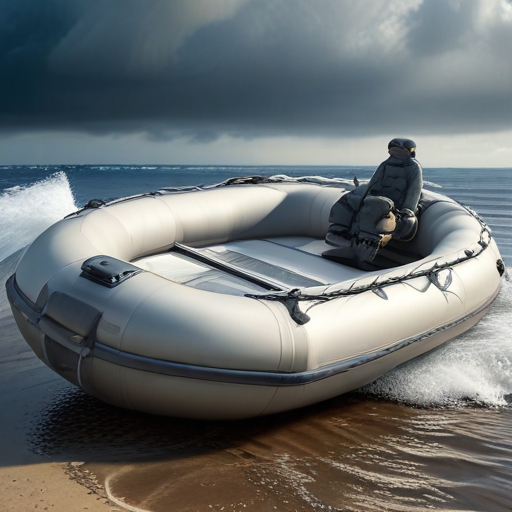
List Various Types of “Inflatable Boats”
Inflatable boats are versatile and used in numerous settings, from recreational activities to professional operations. Here are some common types:
1. Inflatable Rafts: Often used for recreational activities like white-water rafting, these rafts are durable and designed to withstand rough waters.
2. Inflatable Kayaks: Lighter and more portable than traditional kayaks, inflatable models are suitable for both calm and moderate waters, providing easier storage and transport.
3. Inflatable Canoes: Similar to inflatable kayaks but typically wider and designed for calm waters. They offer ample space and are ideal for family outings and fishing trips.
4. Inflatable Dinghies: These versatile boats range in size and are commonly used as tenders to larger vessels. They can be powered by oars, sails, or outboard motors.
5. Rigid Inflatable Boats (RIBs): Combining a solid hull with inflatable tubes for buoyancy, RIBs offer excellent stability and performance in various sea conditions. They are popular in rescue operations, military applications, and recreational boating.
6. Inflatable Sport Boats: Designed for higher performance, these boats often come with options for attaching powerful outboard motors, making them suitable for watersports and quick trips.
7. Floating Tubes: Often seen in water parks and lazy rivers, these are less about transport and more focused on relaxation and leisure, allowing users to float gently.
8. Inflatable Pontoon Boats: Used primarily for fishing, these boats feature two large inflatable tubes connected by a platform. They provide stability and ample space for fishing equipment.
9. Inflatable SUPs (Stand-Up Paddleboards): Lightweight and portable, they perform similarly to hard SUPs but are easier to carry and store.
10. Banana Boats: These elongated inflatable boats are designed for group recreational riding, often towed by a larger boat for fun rides on the water.
Each type caters to specific needs and activities, making inflatable boats a popular choice across various water-based activities.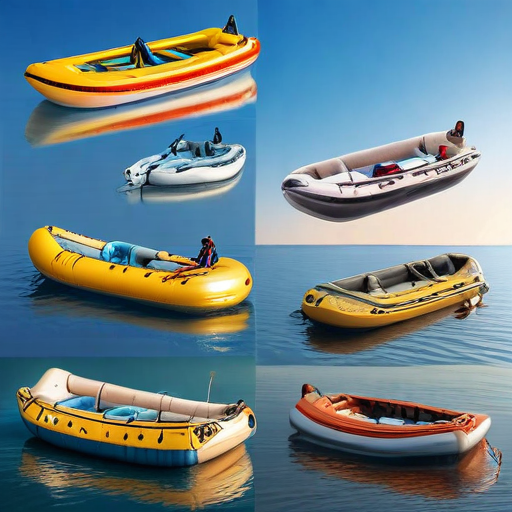
Inflatable Boats Accessories Upgrades and Custom Manufacturing Options
Inflatable boats offer an array of accessories, upgrades, and custom manufacturing options to enhance performance and usability. Key accessories include high-pressure air pumps, canopy or bimini tops for shade, and reinforced keel guards to protect the boat’s underside. Seating upgrades, such as swivel seats and padded cushions, provide additional comfort.
Upgrading to more robust flooring materials, like aluminum or marine plywood, can improve stability and durability. Performance can be significantly boosted with custom-fit outboard motors tailored to the boat’s requirements. Installing navigation systems like GPS and fish finders can also enhance functionality, especially for fishing enthusiasts.
For those requiring specialized features, custom manufacturing options can be particularly appealing. Customizations may include bespoke fittings, tailored storage compartments, and even unique color schemes or branding. Heavy-duty rubbing strakes and additional D-rings can be added for extra durability and utility. Reinforced fabric or extra layers of PVC can be applied to create a more rugged vessel suitable for demanding conditions.
Safety enhancements, like additional grab lines, non-slip flooring, and emergency repair kits, are also popular modifications. To further personalize the boat, consider custom graphics or decals to match specific tastes or corporate branding.
By selecting the right combination of accessories, upgrades, and custom manufacturing options, users can transform standard inflatable boats into highly specialized vessels designed to meet specific needs and preferences.
List Quality Control and The Manufacturing Process of “Inflatable Boats”
Quality Control and The Manufacturing Process of Inflatable Boats
Manufacturing Process:
1. Material Selection:
– High-quality PVC or Hypalon is chosen for durability and resistance to abrasions, UV light, and chemicals.
2. Cutting:
– Material sheets are cut into panels using computer-aided design (CAD) for precise dimensions.
3. Assembly:
– Panels are glued or welded together. Hypalon boats are usually glued, while PVC boats often undergo heat welding.
– Additional features like air chambers, keel, and transom are attached.
4. Inflation:
– The assembled boat is inflated to check for initial fit and finish, ensuring all parts align correctly.
5. Fittings Installation:
– Accessories such as valves, D-rings, handles, and seating are added at this stage.
Quality Control:
1. Material Inspection:
– Raw materials undergo rigorous testing for strength, elasticity, and resistance to environmental factors.
2. Weld/Glue Inspection:
– Each seam is visually inspected and often manually tested for integrity.
– Random samples are taken and subjected to stress tests to ensure bonds hold under load.
3. Inflation Testing:
– Every boat is fully inflated and monitored for air leaks over a specified period, usually 24 hours.
– Use of soapy water can help identify minor leaks at seams and fittings.
4. Functionality Tests:
– Functional components like valves and attachment points are tested for proper operation.
– Additional tests may include flotation and stability checks.
5. Final Inspection:
– A final, thorough inspection ensures the boat meets all safety and quality standards.
– Visual scans for cosmetic defects and another inflation test might be performed.
6. Certifications:
– Boats are often certified by marine regulatory bodies to meet specified standards for safety and performance.
Through meticulous manufacturing and stringent quality control processes, inflatable boats are assured to meet high performance and safety standards, providing reliable use for customers.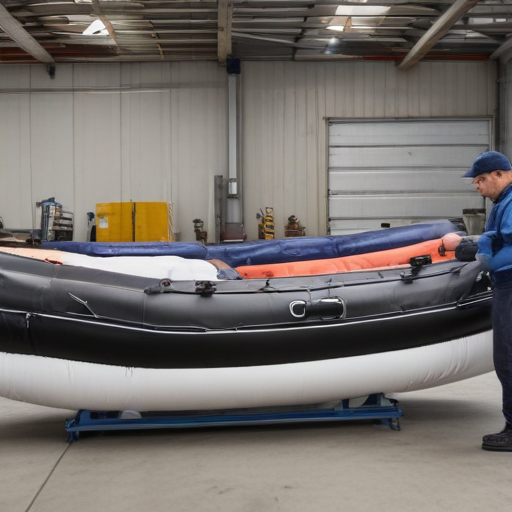
How to use “Inflatable Boats”
Using inflatable boats can be straightforward and enjoyable if you follow a few key steps. Here’s how to use them effectively:
Preparation
1. Inspect the Boat: Before inflating, check for any damages or punctures. Ensure all valves are functional.
2. Inflate: Use a foot pump, hand pump, or electric pump to inflate the boat. Inflate each compartment evenly, ensuring the boat is firm but not over-inflated.
Setting Up
1. Attach Accessories: Install seats, oars, and any additional equipment like a motor or canopy.
2. Safety Gear: Wear life jackets and have a first aid kit on board. Also, carry a repair kit for emergencies.
Launching
1. Select Launch Spot: Find a calm and safe area to launch the boat without obstacles.
2. Carry and Launch: With the help of others if necessary, carry the boat to the water. Place it in the water gently to avoid punctures.
On the Water
1. Boarding: Step into the boat carefully to maintain balance. Distribute weight evenly.
2. Rowing or Motor Use: If rowing, use even, smooth strokes. If using a motor, start at a low speed until you’re familiar with handling.
3. Navigation: Be aware of your surroundings, including other boats, buoys, and natural obstacles.
Returning
1. Approach Shore Carefully: Slow down as you approach. Avoid dragging the boat over rough surfaces.
2. Deflate and Store: Wipe the boat dry, then deflate. Roll up the boat neatly and store it in a cool, dry place.
Maintenance
1. Regular Checks: Inspect for damages regularly.
2. Clean: Wash with fresh water post-use, especially after saltwater exposure.
By following these guidelines, you can ensure a safe and enjoyable experience using an inflatable boat.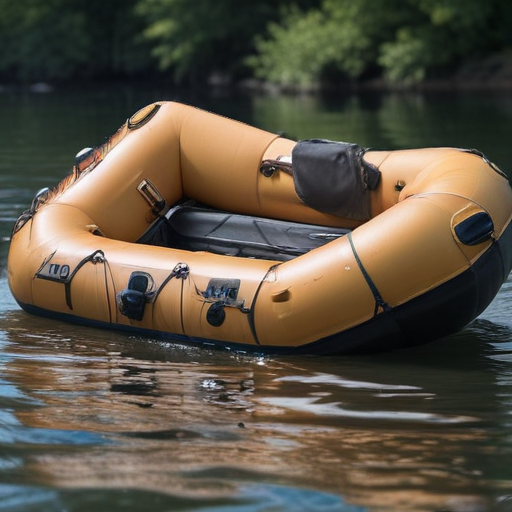
“Inflatable Boats” Comparative Analysis
Inflatable boats have surged in popularity due to their versatility, portability, and cost-effectiveness. Two major types are rigid inflatable boats (RIBs) and soft inflatable boats (SIBs), each offering distinct advantages and limitations.
Rigid Inflatable Boats (RIBs):
RIBs feature solid hulls, typically made from materials like fiberglass or aluminum, coupled with inflatable tubes. This combination ensures superior stability, speed, and seaworthiness, even in rough waters. RIBs excel in professional settings like rescue missions, law enforcement, and military operations. They offer high-performance capabilities with powerful engines and can handle a broad range of marine environments. However, their robust construction makes them heavier and less portable. Additionally, RIBs tend to be more expensive than their soft counterparts, both in initial purchase and maintenance costs.
Soft Inflatable Boats (SIBs):
SIBs, on the other hand, are entirely inflatable, often constructed from durable materials such as PVC or Hypalon. Their biggest advantage is portability; they can be easily deflated, stored in compact spaces, and transported without the need for trailers or large vehicles. SIBs are ideal for recreational uses such as fishing, leisurely cruising, or short-distance travel on calm waters. They are lighter, easier to handle, and generally more affordable, making them accessible to a broader audience. However, SIBs lack the structural integrity and performance of RIBs, resulting in lower stability and speed, especially in challenging conditions.
Conclusion:
Choosing between RIBs and SIBs depends on specific needs and circumstances. RIBs offer enhanced performance, durability, and versatility, suitable for demanding and professional uses but come with higher costs and less portability. SIBs provide a more affordable, lightweight, and easily transportable option, perfect for casual or recreational purposes but with limitations in rough conditions and heavy-duty tasks. Understanding these distinctions can guide buyers to select an inflatable boat that best matches their intended use.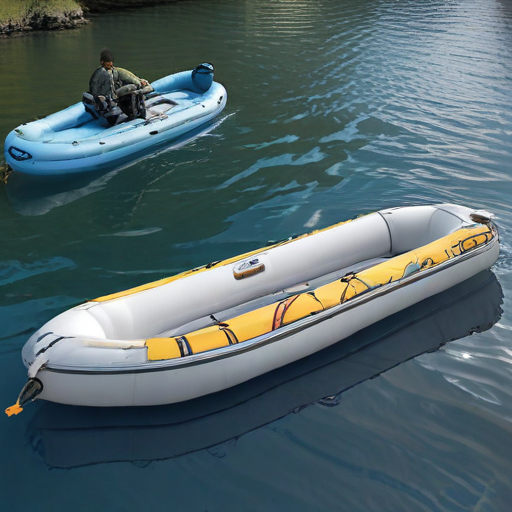
“Inflatable Boats” Warranty and Support
Inflatable Boats Warranty and Support
At Inflatable Boats, we stand by the quality and durability of our products, offering an industry-leading warranty and comprehensive support to ensure your satisfaction and peace of mind.
Warranty Coverage:
– Hull and Seams: Our boats come with a 5-year warranty covering material and workmanship defects. This includes issues related to the hull and seams, ensuring your boat remains watertight and robust during this period.
– Accessories: We provide a 2-year warranty on all included accessories, such as oars, pumps, and repair kits. This ensures that all components of your inflatable boat are covered.
– Valves and Fittings: Valves and other fittings are covered under a 1-year warranty, guaranteeing that essential parts of your boat function properly.
Conditions:
– The warranty is applicable to boats used under normal conditions for recreational purposes.
– Proper maintenance and care are expected to maintain warranty validity.
– Warranty does not cover damage caused by accidents, misuse, neglect, unauthorized alterations, or improper storage.
Support Services:
– Customer Service: Our dedicated customer service team is available to assist with any inquiries, troubleshooting, or guidance you may need. You can reach us through our toll-free number, email, or live chat on our website.
– Repair and Maintenance: We offer professional repair services for warranty-covered repairs and out-of-warranty maintenance. Our skilled technicians ensure your boat is serviced with genuine parts and expert care.
– Instructional Materials: Access a variety of resources, including user manuals, instructional videos, and maintenance tips on our website to help you get the most out of your inflatable boat.
At Inflatable Boats, we are committed to delivering exceptional customer service and support, ensuring that your boating adventures are safe, enjoyable, and trouble-free.
For more detailed information, please refer to our official warranty guide or contact our support team directly.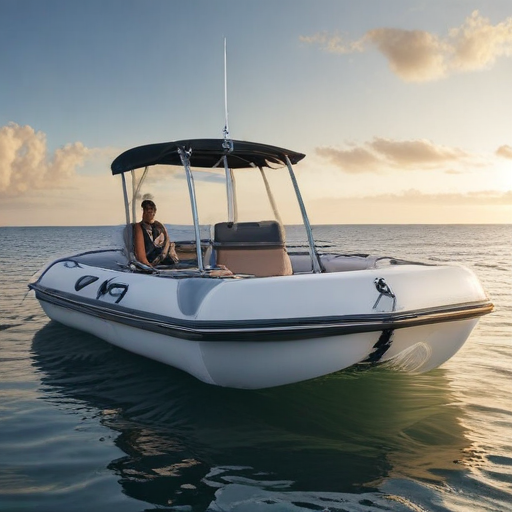
List “Inflatable Boats” FAQ
Inflatable Boats FAQ
#### What are inflatable boats made of?
Inflatable boats are commonly made from materials like PVC (Polyvinyl Chloride) or Hypalon, both known for their durability and resistance to wear, tear, and UV rays.
#### How durable are inflatable boats?
High-quality inflatable boats are incredibly durable, with many models designed to withstand tough marine environments. They often feature multiple air chambers to ensure buoyancy even if one chamber is punctured.
#### How do I inflate and deflate an inflatable boat?
Most inflatable boats come with a foot pump or electric pump for inflation. Simply attach the pump to the boat’s valves and inflate. To deflate, open the valves and press the boat to expel the air.
#### Are inflatable boats safe?
Yes, they are generally considered safe for various activities like fishing, diving, and leisure boating. Always ensure the boat is fully inflated and free from leaks before use, and adhere to weight capacity guidelines.
#### How do I transport and store my inflatable boat?
Inflatable boats can be easily deflated, rolled up, and stored in a carry bag, making them highly portable. Store in a cool, dry place and avoid prolonged exposure to sunlight to prolong the material’s lifespan.
#### Can I repair a punctured inflatable boat?
Yes, most inflatable boats come with a repair kit for patching small punctures. For significant damage, you may need to consult with the manufacturer or a professional repair service.
#### What is the weight capacity of an inflatable boat?
Weight capacities vary by model, ranging from a few hundred pounds to over a thousand. Always check the manufacturer’s specifications to ensure safe usage.
#### How long does an inflatable boat last?
With proper care and maintenance, an inflatable boat can last anywhere from 5 to 15 years. Regularly cleaning the boat and storing it properly can significantly extend its lifespan.
#### Do inflatable boats require registration?
Registration requirements vary by region and the boat’s size. Check local regulations to determine if your inflatable boat must be registered.
#### Can I use an outboard motor with my inflatable boat?
Many inflatable boats are designed to accommodate outboard motors. Refer to the manufacturer’s guidelines for maximum engine size and power specifications.
This FAQ should help answer common questions regarding inflatable boats. Always refer to the owner’s manual for specific guidelines and safety tips.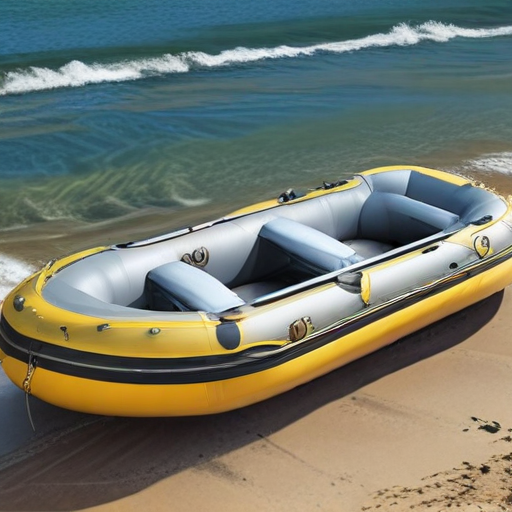
Top 10 FAQ with answer about Inflatable Boats for Buyer Sourcing from China
Top 10 FAQs About Sourcing Inflatable Boats from China
1. What Types of Inflatable Boats Are Available?
– Chinese manufacturers offer a range of inflatable boats including rigid inflatable boats (RIBs), whitewater rafts, dinghies, kayaks, and pontoons.
2. What Are the Common Materials Used?
– PVC (Polyvinyl Chloride) and Hypalon are the primary materials. PVC is cheaper and suitable for calm waters, while Hypalon is more durable and resistant to extreme conditions and UV light.
3. What Is the Minimum Order Quantity (MOQ)?
– MOQs vary by supplier, but typically range from 10 to 50 units per order. Some manufacturers might offer lower MOQs for sample orders.
4. Are Customizations Available?
– Yes, most Chinese manufacturers offer customization options such as logo printing, color choices, additional features (like storage compartments), and size modifications.
5. How Long Does Production Take?
– Production timelines can vary based on order size and customization but generally range from 30 to 60 days after the order is confirmed.
6. What Are the Payment Terms?
– Common payment terms include a 30% deposit upfront with the balance paid before shipping. Some manufacturers may accept letters of credit or other payment arrangements.
7. How Is Quality Ensured?
– Reputable manufacturers often have strict quality control procedures, including air pressure tests and material inspections. Certifications such as ISO 9001 can also be indicative of quality standards.
8. What Shipping Methods Are Available?
– Inflatable boats can be shipped via sea freight for bulk orders or air freight for faster delivery. Sea freight is usually more cost-effective.
9. Is There After-Sales Support?
– Many suppliers offer after-sales support, including repair kits, warranties (typically 1-2 years), and customer service to address any issues.
10. What Should I Note About Import Regulations?
– Be aware of import duties and regulations specific to your country. It’s essential to have clear information about the required documentation to avoid delays and additional costs.
Conclusion
Sourcing inflatable boats from China can be cost-effective if you understand the options available and the processes involved. By asking the right questions and clarifying specifics with suppliers, you can ensure a successful procurement experience.

